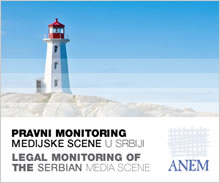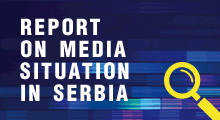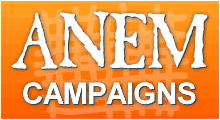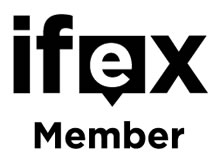27. 10. 2003
Is anyone out there listening?
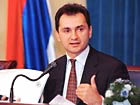
Jacques Bughin, Bozidar Djelic, and Jurgen Schroder
Some of Europe's radio stations have a chance to double their revenues, but deregulation will heighten the difference between winners and losers.
In the race for advertising revenue, Europe's radio stations at best win the bronze medal: their 5 percent share of advertising expenditure leaves them trailing well behind television and newspapers. Their predicament reflects both radio's history, in which advertising has been either banned or severely restricted, and continuing geographical fragmentation, which makes media planning difficult for advertisers of national scope. Advertisers, moreover, have questioned the accuracy of ratings of audience size.
History and geography haven't been the only handicaps of radio; it is also hampered by its very character. A nonvisual medium can't compete with the breakneck editing and eye-popping effects of many television commercials - a problem that explains why consumer goods companies have traditionally spent up to 75 percent of their budgets on TV. Nor can radio approach print's ability to convey product information quickly, clearly, and strikingly, to mass and niche audiences alike.
But two, if not three, developments are transforming radio's prospects. The first, which makes truly national networks a possibility, is the growing availability of commercial licenses for stations in Western Europe. The second is the loosening of restrictions on the number of minutes per hour that may be devoted to commercials. In the short term, these moves could boost radio's advertising revenue, much as comparable developments raised the advertising revenue of European TV during the mid-1980s. Indeed, full deregulation in Europe could permit radio stations to double their revenues over the next five to seven years.
Some observers argue that a third development - digital audio broadcasting (DAB) via existing FM frequencies, as well as satellite, cable, and the Internet - will soon pose a direct challenge to established broadcasters. They note, for instance, that DAB is expected to reach a penetration level of 10 percent in the United Kingdom by the 2005. We believe that, at least for the next three to five years, broadcasters needn't worry. In the meantime, they will be able to use the Internet to enhance their brands, to strengthen their relationship with listeners, and to start exploiting the increase in the number of stations made possible by full deregulation and the rollout of broadband technology.
Radio penetration
Radio reaches more than 80 percent of households in the main European countries and matches TV in the average listening time it commands: more then three hours a day in France and two-and-a-half hours a day in Germany. Until 1982, thee were only stations in Europe, all publicly owned. Since then, European countries have vastly increased the number of FM frequencies available for broadcasting.
The medium does have certain inherent advantages. Listeners find it both relaxing and convenient for receiving information. It can be enjoyed anywhere and in conjunction with other activities. And it is no longer necessary to have a radio nearby to pull in programs, for the advent of Internet broadcasting means that anyone with a PC in the office can tune in.
As an advertising medium, radio is more effective then the Internet, according to studies conducted by Forrester Research. Moreover, radio commercials tend to fill natural pauses
between musical selections rather than interrupt extended narratives, so listeners find radio commercials less obtrusive than their TV counterparts. For advertisers, radio has the virtue of attracting both an audience somewhat different from television's and the same audience at different times of day: the peak time for radio is 7 AM to noon, while for TV it is from 7 PM to 11 PM. For that reason, and because retention of listeners is high, TV sometimes uses radio to build awareness of TV programs.
Radio advertisements can by planned and produced cheaply and quickly - sometimes within hours - making them an excellent tool for announcing sales or other one-off events. Finally, the relatively low cost of reaching each listener is attractive for some advertisers (particularly local and regional businesses) that either can't afford to use TV or print or don't require either medium's reach. Conversely, radio is ideal for
well-capitalized national brands that want to target specific local markets.
But radio remains a regulated medium, despite its benefits for advertisers, the rising number of FM frequencies now available, and the increase in the number of minutes per hour when advertising may be transmitted. True, the French regulatory body ( the Conseil Superieur de l'Audiovisuel) distributed an additional 324 FM frequencies to commercial operators in 1997-98 alone. Nonetheless, French stations are still licensed to broadcast only certain types of programming, which is allowed to reach only a predetermined number of listeners, who may be exposed to only 16 minutes an hour of advertising. In countries such as Germany and United Kingdom, where regulation is even more onerous, ad spending comes to less than $18 a head. In Portugal and southern Belgium, where the amount of airtime allowed for commercials is unregulated, the figure rises to more than $33 a head. Stations in some markets may be able almost to double their revenues.
During the five years following the deregulation of TV in the mid-1980s, Europe's markets for television commercials recorded a compound annual growth rate of more
than 8 percent in real terms, or a nominal doubling. The United States shows what can
be achived in radio: the Telecommunications Act of 1996 increased the number of stations that companies may own in a single market and in all US markets. This change
had the effect of raising price-to-earnings multiples and advertising revenues and,
after consolidation, of cutting costs: US radio networks now record annual returns of 30 to 40 percent before interest and taxes.
In Europe, consolidation has barely begun, so the potential for matching these results is huge. Some of the best stations are quasi-monopolies; others have been quick to exploit the early phases of deregulation. The very best European radio broadcasters - NRJ and FUN95 - already report US-sized returns, an achievement no other European media industry can boast. More widespread deregulation will heighten the difference between winners and losers.
Because radio is a fixed-cost business in which revenue growth translates directly into profits once the breakeven point has been reached, the potential for increasing revenues is greatest in the largest markets and in markets where the amount of advertising isn't restricted by government. European networks that have been free to adopt popular music formats, for example, enjoyed revenues that on average were 25 percent higher from 1994 to mid-1998 than those of networks with varied programming. But radio broadcasters of whatever format or nationality can grab more than their share of ad volume only if they understand the three stages of market evolution and, hence, which levers to pull at which stage to drive sales.
Tailoring strategy to market evolution
A three-stage sequence characterizes the evolution of the European radio market away from regulation and toward a multiplication of outlets, the consolidation of those outlets into networks, and the expansion of those networks into new markets and, ultimately, new businesses.
1. Create value through expansion and consolidation
In stage one, commercial radio stations are up and functioning, but their coalescence into regional or national networks with common ownership, similar programming, and unified sales and marketing staffs has barely begun. At the start of this phase, the number of outlets for advertising and the amount of airtime available per outlet are limited, thus creating high demand and permitting stations to charge steep rates. As liberalization proceeds and supply increases, stations must compete for advertisers rather than the other way around.
Stations can regain the upper hand only by greatly expanding their listenerships. They can do so by bidding for new frequencies, by purchasing other stations within a country or region, or (if they lack the capital for acquisitions or run into rules against concentration of ownership) by entering into partnership with other stations to share programming and sell advertising time. In Germany, Hit Radio and NRJ have bought stations with complementary programming both in big cities across the country and outside them, in several of the federal states - an approach permitting each organization to create a regional or loose national network.
Such networks can give large regional or national advertisers the one-stop shopping they prefer while offering broadcasters - whose sales experience is shallow - enough heft to attract sales talent, to develop expertise in customer management, and to realize economies of scale by sharing market research and general management and administrative costs. In France, for instance, the station Radio Aime FM shares the cost of administrative and technical services with Voltage FM.
Networks that cross borders are not likely to materialize in the foreseeable future, given differences in language and taste, the need to position identical products differently in each market, and the unreadiness of even pan-European or global advertising firms to do business in a pan-European way.
2. Increase revenue per listener
In the second stage in the evolution of market maturity, radio companies need to increase their share of revenue relative to their share of audience. Superior management contrives to do so by delivering the audience that advertisers really want.
Choosing the right format and developing the programming that audiences like to hear are the keys to improving a company's audience share and the value of that audience to advertisers. Typically, programming is centralized. Of course, a chain's particular format, and thus the kind of audience it attracts, determines the type of advertiser solicited. A string of stations with the same format can appeal to the mass market (as RTL does in France) or cater to a smaller, more specialized audience that would otherwise be difficult to reach. Louvin, the owner of Aime FM, is using a format focused on women over 50 to build the fourth-largest network in France. With outlets in big cities throughout the country, Aime FM offers popular music, contests, and a call-in show featuring a well-known television host. Such narrow targeting requires sharp programming and market research skills.
Another important lever of value creation is the management of advertising sales. In France, third-party sales organizations handle more than 80 percent of syndicated sales for privately owned radio stations. Only the three largest networks have in-house sales operations: CLT-UFA owns IP, Hachette owns Europe Regies, and NRJ owns NRJ Regies. In Germany, only NRJ and the Gong Group have their own sales forces. As additional networks form, they will have to establish such sales teams or create teams with others.
Leading networks have assembled internal cross-functional teams to coordinate advertising sales with programming. Incentives for such teams should be based on sales yield rather than volume. To improve that yield, however, stations need accurate tools to measure audience share and satisfaction; a daily pool or information collected on a network's World Wide Web site could help assess the latter. Raising the yield also depends on the skill of advertising agencies in producing commercials attuned on the medium's particular qualities.
3. Build and leverage the brand
Stage three - ensuring the long-term viability of a radio network - requires a brand name that commands audience loyalty. A strong brand permits a network to expand more easily into other media and other countries. NRJ of France, for instance, is moving into Germany and Belgium: RTL moved into television much earlier. A powerful brand also provides opportunities to branch into merchandising (by issuing CDs of popular material, for example) and into services (by sponsoring and promoting concerts and other events, alone or jointly with partners). Branded radio stations and networks such as Skyrock and NRJ in France, as well as Hit Radio and Antenne Bayern in Germany, have already begun to do this. Some stations and networks are experimenting with continuous-relationship-marketing programs based on their brands. In addition, brand strength can help a network obtain exclusives on favorable terms.
A network's next step involves moving on to the Internet to sell merchandise. Networks can also create stronger bonds with listeners by setting up interactive vehicles, such as chat rooms. Strategies of this kind are already visible in the United States.
The prospect for digital and the Internet
As all this suggests, digital technology and the Internet, far from being a direct threat, can actually enhance the attractiveness of traditional radio. But to capture the full potential of these new developments, companies will have to experiment with hybrid business models.
In Europe, digital audio broadcasting (DAB) is unlikely to emerge as a truly competitive medium for some time; so far, only the 20 national stations in France have chosen to adopt it. As yet, few consumers consider DAB's applications and features (for instance, CD-quality sound, data broadcasting, and interactivity) sufficiently valuable to justify the rather high cost of digital receivers. Moreover, so long as regulatory authorities restrict the number of stations that can transmit signals through the more established technologies, the other advantage of digitization - the multiplication of frequencies - will remain largely hypothetical. And with many unused frequencies remaining on the FM band and the public's interest dormant, broadcasters really don't see the point of investing large sums in broadband technology, which offers an even wider range of frequencies than does DAB.
The Internet is probably a more promising avenue for radio broadcasters, but "Webcasting" via leased narrowband lines hasn't really caught on. At present, the number of listeners tuning in on the Web, whose sound quality is still inferior to that of FM radio, amounts to less than 1 percent of radio's total weekly audience. Even if the constraints on sound quality and bandwidth disappeared, the value proposition of Internet-only Webcasting would remain weak. How could it be otherwise when Internet listeners in Europe have to pay what are essentially telephone rates for the time they spend listening?
Webcasting's main advantage over traditional broadcasting is its ability to offer tailor-made playlists for niche audiences. Because the Web is global, it might seem that the market for such segments should be able to reach critical mass. But traditional broadcasting in Europe offers a wider range of choices than ever before, and broadcasters seem to have only a limited ability to make money by reaching very narrow slivers when that course entails aggregating audiences across national borders. MTV, the music-oriented TV channel, has learned from bitter experience that it must customize its programming for the different tastes of every European country. Some successful networks such as Skyrock go even further and differentiate their programming by region.
It is therefore surprising only at first glance that one highly successful European Webcaster has likewise adopted a regional rather than global approach. Kiss.fi is not a pure-play Webcaster but rather on-line spin-off of Finland's second most popular radio station. By offering listeners chat rooms and access to the station's announcers, Kiss.fi has fashioned a virtual community that is also a geographic one. Kiss.fi now contributes 20 percent of the parent's total revenues. Of course, its success may have something to do with the fact that, of all the countries in the world, Finland has the highest percentage of citizens who ski the Web.
-
No comments on this topic.
